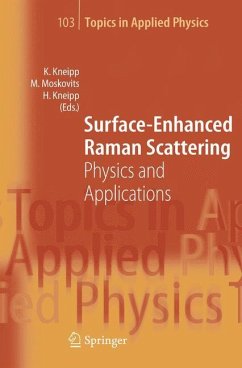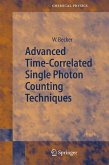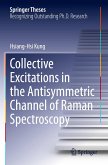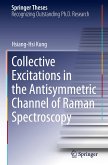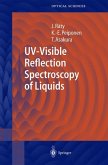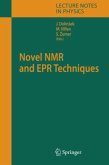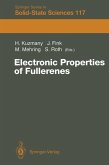Almost 30 years after the first reports on surface-enhanced Raman signals, the phenomenon of surface-enhanced Raman scattering (SERS) is now well established. Yet, explaining the enhancement of a spectroscopic signal by fourteen orders of magnitude continues to attract the attention of physicists and chemists alike. And, at the same time and rapidly growing, SERS is becoming a very useful spectroscopic tool with exciting applications in many fields. SERS gained particular interest after single-molecule Raman spectroscopy had been demonstrated. This bookl summarizes and discusses present theoretical approaches that explain the phenomenon of SERS and reports on new and exciting experiments and applications of the fascinating spectroscopic effect.
Hinweis: Dieser Artikel kann nur an eine deutsche Lieferadresse ausgeliefert werden.
Hinweis: Dieser Artikel kann nur an eine deutsche Lieferadresse ausgeliefert werden.
From the reviews:
"Variants of Raman spectroscopy are underused ... but there has been a recent resurgence of interest in them. This collection of 24 articles reveals the major reasons for this renaissance. The editors include ... scientists who were critical to the initial understanding of the phenomenon of surface-enhanced Raman scattering (SERS) ... . a good job of balancing fundamental studies with applied ones and new contributors with the experts. It will be a valuable resource for anyone understanding the scope of the SERS field ... ." (Christy L. Haynes, Journal of the American Chemical Society, Vol. 129 (7), 2007)
"Variants of Raman spectroscopy are underused ... but there has been a recent resurgence of interest in them. This collection of 24 articles reveals the major reasons for this renaissance. The editors include ... scientists who were critical to the initial understanding of the phenomenon of surface-enhanced Raman scattering (SERS) ... . a good job of balancing fundamental studies with applied ones and new contributors with the experts. It will be a valuable resource for anyone understanding the scope of the SERS field ... ." (Christy L. Haynes, Journal of the American Chemical Society, Vol. 129 (7), 2007)

